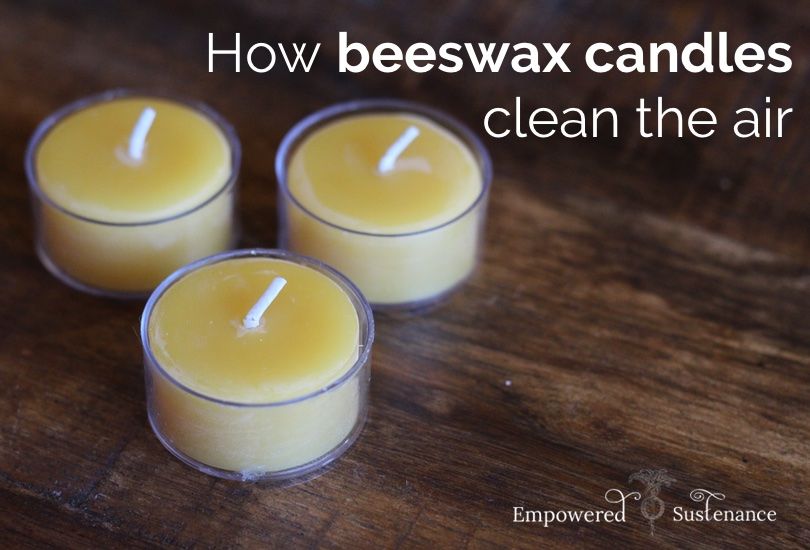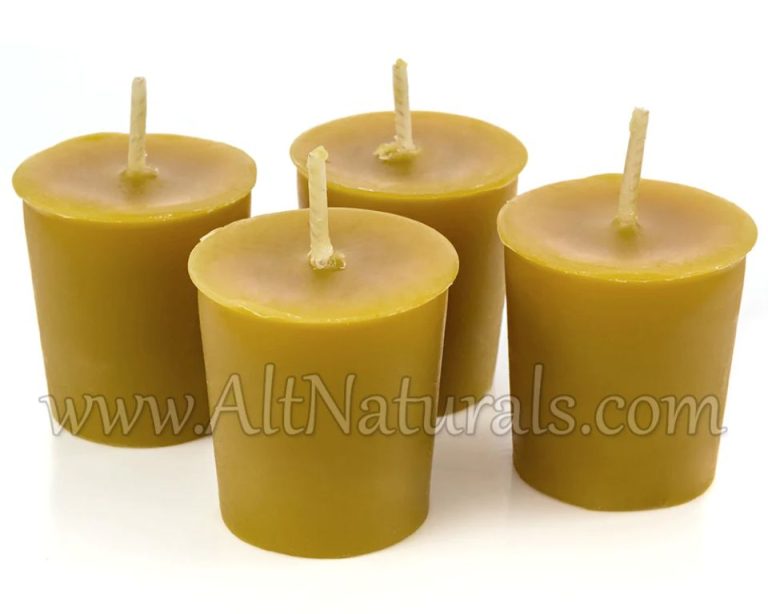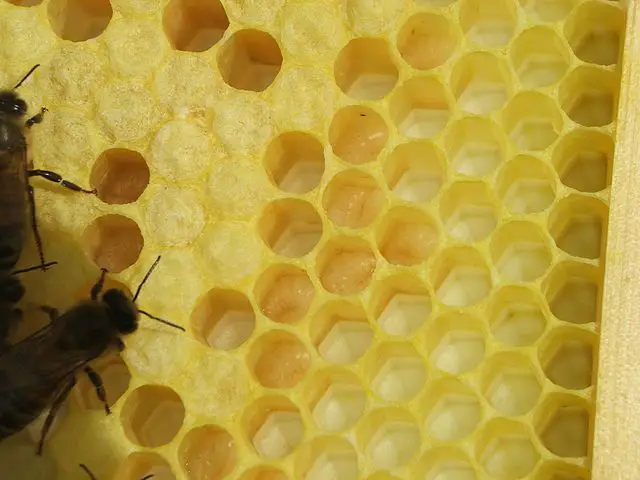What Is The Healthiest Wax For Candles?
Candlemaking is the process of creating candles, which involves selecting and preparing the wax, wicks, scents, and other components. The type of wax used is one of the most important factors in candlemaking, as it impacts the candle’s burn quality, scent throw, and safety. Some waxes are healthier than others when burned, so it’s important to understand the different options.
The most common candle waxes fall into four main categories: paraffin, soy, beeswax, and palm wax. Paraffin wax is a byproduct of petroleum refining and is commonly used in mass-produced candles because it is inexpensive. Soy wax is made from hydrogenated soybean oil and is often marketed as a natural, eco-friendly option. Beeswax is secreted by honeybees to build their honeycombs and has a pleasant natural honey aroma when burned. Palm wax comes from the leaves of palm trees and is praised for its hardness and high melting point.
When selecting a candle wax, factors like emissions, scent throw, and environmental impact should be considered. The wax type affects the safety and quality of the candle, making it an important decision in the candlemaking process.
Beeswax
Beeswax is a natural wax produced by honey bees. It has several pros when used for candle making:
Beeswax candles burn cleanly and do not release toxic chemicals into the air (https://www.honshoney.com/blog/2021/10/26/4-benefits-of-beeswax-candles). The wax contains no petroleum by-products, lead, or toxins, making beeswax candles a healthy option. Beeswax candles also emit negative ions which help clean the surrounding air.
Beeswax has natural honey and flower nectar aromas that provide a pleasant scent. The wax burns brighter than other waxes, without producing smoke or dripping. Beeswax candles have a natural honey color and texture.
On the downside, beeswax candles are more expensive than paraffin or soy candles because beekeeping and processing the wax requires more labor and costs. Beeswax also burns more quickly than harder waxes, so beeswax candles may not last as long (https://creativecandles.com/blogs/blog/benefits-of-beeswax-candles).
Beeswax is gathered from beehives where bees produce the wax to build honeycomb. Beekeepers extract excess wax from the hives without harming the bees. Beeswax production is considered ethical and sustainable.
Soy Wax
Soy wax is made from hydrogenated soybean oil. It is considered one of the healthiest candle wax options for the following reasons:
Pros:
- Made from a renewable resource (soybeans)
- Burns cleaner than paraffin wax, producing less soot
- Has a lower melting point than paraffin, so doesn’t require lead or zinc core wicks
- Biodegradable and eco-friendly
Cons:
- Can be more expensive than paraffin wax
- May not hold scent as well as paraffin wax
- Has a lower melting point than paraffin, resulting in a shorter burn time

Production methods: Soy wax is made by hydrogenating soybean oil, which converts the oils into a solid wax. No solvents are used in this process.
Price: Soy wax tends to be more expensive than paraffin wax but less expensive than beeswax. Expect to pay $1-3 more per pound compared to paraffin.
Burn properties: Soy wax has a lower melting point of around 115-125°F, resulting in a cooler, smoother burn compared to paraffin. However, this also means soy candles have a shorter burn time, usually around 20 hours for a 4 oz candle.
Overall, soy wax is considered one of the cleanest, eco-friendly candle waxes available today (source). It produces very little soot and fumes compared to paraffin and other petroleum-based waxes.
Paraffin Wax
Paraffin wax is a common candle wax derived from petroleum. It is inexpensive to produce and widely available. However, paraffin wax raises some health concerns:
- Paraffin wax candles can emit harmful fumes like benzene and toluene when burned, according to some sources (Bittersweet Candle Co.).
- The additives used to color and scent paraffin candles may contain toxins like phthalates (Bittersweet Candle Co.).
- On the other hand, reputable studies have not conclusively shown paraffin wax itself to be dangerous (Healthline).
The production process for paraffin wax requires refining and purifying crude oil. This makes it very inexpensive compared to natural waxes. Paraffin wax is easy to work with and provides a nice surface for scent throw. The cost savings and performance are reasons it remains popular despite potential health concerns.
Palm Wax
Palm wax comes from the fruit of palm trees and is considered a natural, vegan wax. Some key pros of palm wax in relation to health are:
- It does not release harmful chemicals when burned like paraffin wax.[1]
- It is free from pesticides and pollutants. [2]
- It is biodegradable and sustainable if harvested ethically from palm trees. [3]
However, there are some cons to consider:
- Irresponsible palm oil production leads to deforestation which damages ecosystems and wildlife habitats.[2]
- The quality and scent throw can vary in palm wax.[3]
Palm wax is extracted through a cold press process without using chemicals. This makes it more expensive than paraffin, but cheaper than beeswax. [1] It has excellent scent throw and burn properties, burning slowly and cleanly. [2] When sourced sustainably, palm wax can be a good natural option for health. But it’s important to research producers carefully.
Coconut Wax
Coconut wax is growing in popularity as a natural, vegan alternative to paraffin wax. Coconut wax is made from the oil of coconut flesh, and offers some health and environmental benefits compared to petroleum-based waxes.
Some of the pros of coconut wax for health and the environment include:
- Coconut wax is made from a renewable resource – coconut trees – rather than fossil fuels like paraffin wax.
- Coconut wax candles burn cleaner and emit less soot than paraffin candles (https://www.virginutty.co.uk/blog/coconut-oil-wax-candles-benefits). This makes them better for indoor air quality.
- The scent from essential oils may last longer in coconut wax compared to soy or paraffin.
- Coconut wax is non-toxic and biodegradable.
Some cons to consider:
- Coconut wax costs more than paraffin wax due to production methods.
- The slow burn rate means more frequent trimming of the wick may be needed (https://suffolkcandles.co.uk/blogs/candles/the-pros-and-cons-of-coconut-wax-candles).
- Coconut wax doesn’t hold dye color as well as soy wax.
Overall, coconut wax can be a good choice for those concerned about health, air quality, and the environment. The higher price point and unique burn properties are factors to consider.
Comparison
When comparing the healthiest wax for candles, there are several factors to consider including health impacts, price, burn time, and availability of the different waxes.
In terms of health, beeswax and soy wax are generally considered the healthiest options. Beeswax is all-natural, non-toxic, and emits negative ions when burned which can help purify the air. Soy wax is also natural and non-toxic, made from hydrogenated soybean oil. Paraffin wax is made from petroleum and can release toxins like toluene and benzene when burned, so it is not as healthy of an option (https://www.marthastewart.com/8061950/candle-wax-type-guide).
Looking at price, paraffin wax tends to be the least expensive option followed by soy wax. Beeswax is usually the most expensive due to the labor-intensive process of extracting the wax from honeycombs. Paraffin wax is cheap to manufacture from petroleum.
For burn time, paraffin wax typically lasts the longest, followed by beeswax and soy wax. Paraffin’s long burn time comes from its highly refined structure. Beeswax and soy wax have shorter burn times due to their natural structure.
In terms of availability, paraffin wax and soy wax are the most widely available as they are mass produced. Beeswax can be more difficult to source depending on location. Coconut wax is also not as readily available compared to paraffin and soy.
Recommendation
Based on the research, the healthiest candle wax recommended is beeswax. Beeswax burns cleanly without releasing toxic chemicals or soot into the air. According to this source, beeswax has natural antibacterial and antifungal properties that help purify indoor air. It’s also hypoallergenic and doesn’t emit carcinogenic compounds when burned. While beeswax candles tend to be more expensive than paraffin or other waxes, they are a smart investment for health and air quality. Many manufacturers now offer affordable beeswax candles, making them accessible to most consumers. When it comes to health, beeswax is the gold standard for candle wax.
Alternatives
There are several alternative options to traditional candles that can provide lighting, ambiance, and scent without the potential health risks. Two popular alternatives are:
Essential oil diffusers
Essential oil diffusers utilize ultrasonic technology and water to disperse essential oils into the air. The oils provide fragrance without releasing soot or smoke. Popular essential oil scents include lavender, eucalyptus, lemon, and peppermint. Diffusers are considered very safe and do not have open flames. They also allow you to switch between different essential oils to change up the scent. Some models feature color-changing LED lights to provide ambiance. Diffusers only require refilling with water and a few drops of oil. They are an excellent candle alternative for those concerned about indoor air quality. (1)
Electric candles
Electric candles are battery-operated or plug-in candles that mimic the look of real candles with flickering lights. The bulbs inside electric candles can last for thousands of hours without needing to be replaced. Many models are remote controlled for convenience. Electric candles provide the ambiance of a real candle without an open flame. They also don’t release any smoke or scents, which is beneficial for people sensitive to fragrances or candle ingredients. Electric candles are a safe choice for homes with kids or pets since there is no fire risk. They’re also great for placement near curtains or furniture since there’s no melting wax. (2)
Diffusers and electric candles allow people to enjoy scents and ambiance without the potential health risks of burning traditional candles. They are excellent eco-friendly options to consider.
Conclusion
In summary, when evaluating the healthiest wax for candles, beeswax stands out as the top choice. Beeswax is all-natural, non-toxic, and burns cleanly without releasing harmful chemicals or smoke. It’s made sustainably by honey bees and has a pleasant natural honey aroma when burned. Soy wax is another good option, as it’s made from renewable soybean oil. However, it doesn’t burn quite as cleanly as beeswax.
Paraffin wax is made from petroleum and can release carcinogens and toxins when burned, so it’s best avoided for health reasons. Palm wax raises environmental concerns about palm oil production. Coconut wax burns cleanly but may have more soot than beeswax or soy wax. Ultimately, 100% natural beeswax is the healthiest and safest choice for candle making. Choosing local beeswax supports small apiaries and makes a big impact through everyday lighting.





